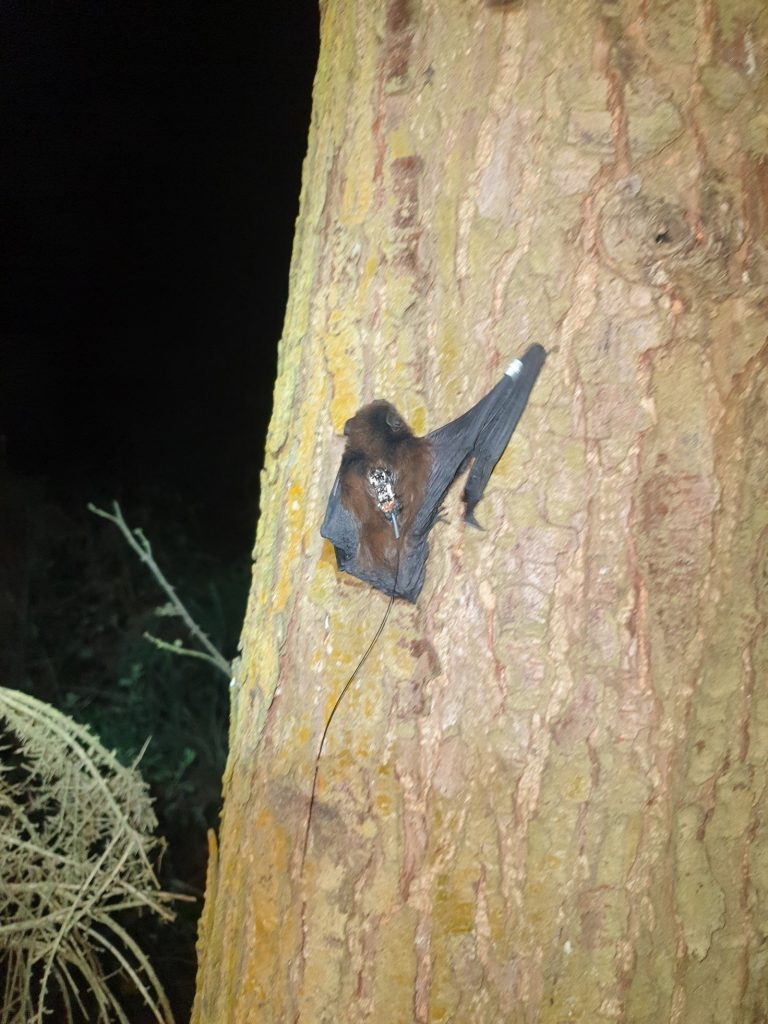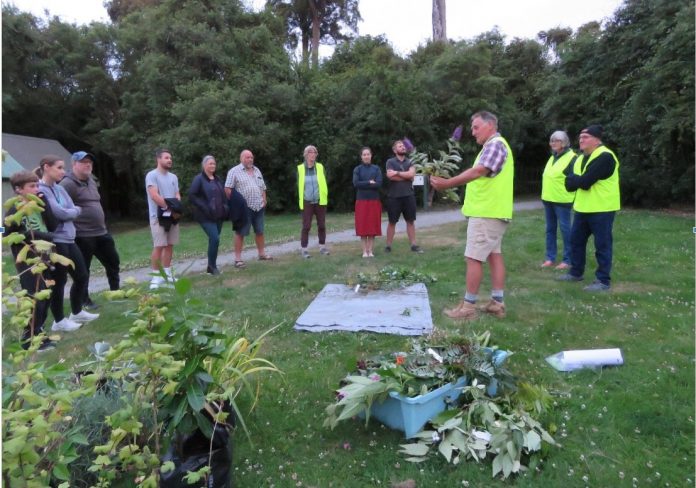Voice for Nature with Ines Stager
For the fourth year in a row, members of the Talbot Forest Working Group (TFWG) have invited the public to view Pekapeka-tou-roa, the longtailed bats at Talbot Forest Scenic Reserve in Geraldine.
Over 12 days, the group welcomed 170 visitors from all over New Zealand as well as visitors from overseas. There was just one night when no bats were seen, despite plenty of insects flying. The temperatures on the last six viewing evenings were considerably warmer than earlier and more bats were out and about.
On two nights, Tim Exton from the Department of Conservation (Doc) talked about pest control devices that when applied, improve the habitat of native bats, birds, lizards and insects. While pest control is being undertaken in Talbot Forest and surrounding areas, more could be done to reduce the predators by more people deploying a trap or traps in their backyard.
On two evenings, Gary Foster gave an overview of the numerous pest plants that invade native ecosystems and river habitats. The feedback has been that people were unaware that these often ‘‘pretty plants’’ are pests and the extent they spread into native ecosystems and subsequently displace native plants.
The long-tailed bats are one of two endemic species of bats, which means their natural habitat is in New Zealand. They are the only native land mammals and the only flying mammals in the world. Unfortunately, they are a threatened species and face an immediate high risk of extinction, a conservation status assigned to a species by Doc.

In November, members of the TFWG followed two pregnant female bats with transmitters fitted on the bats’ back by Doc staff in order to find roost sites. Four unknown roost sites were identified and marked. Small cavities in tall old trees which are well insulated with high humidity are the preferred accommodation in Talbot Forest.
Mating occurs around March before the colder season starts. Females give birth to a single pup around December and provide the care for the young. The pups fledge around 40 days after being born and are weaned about 10 days later.
During the monitoring, we counted 16 bats coming out of a maternity roost. Female bats start giving birth when they are two or three years old.
When the bats emerge from the roost sites at dusk, their task is to feed. They consume insects while flying. An abundance of flies, moths and beetles provide the food source.
Automatic Bat Monitors (ABMs) are being placed in areas where people have observed bats and also near known sites, to explore further areas in the region where bats forage and also roost. This is to fill some gaps between known bat roost locations.
It is not known whether the population of Pekapeka-touroa in South Canterbury is increasing, stable or decreasing. Habitat destruction through the felling of trees with cavities as well as cats, rats, stoats and possums predating on bats are the main risks to the regional bat population. More needs to be done to protect the species in our fragmented landscape.
Ines Stager is a landscape architect based in Geraldine, and a committee member of the local branch of the Royal Forest & Bird Protection Society.





